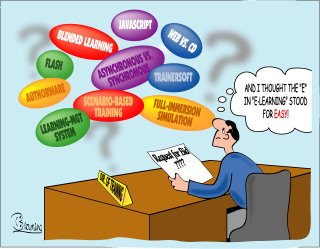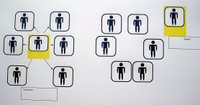Book Review Day Five

This last chapter in Facilitating online learning: Effective strategies for moderators allowed that facilitators may make mistakes. We may create, unintentionally, the further development of participants’ ideas. The examples from the author’s practice are interesting and entertaining because they are examples of bad practice. Further explanation is given on how the facilitator hindered or derailed the dialogue. It was often tone or voice but the dreaded “sage on the stage” made a frequent appearance in a few different ways to block the cultivate of pragmatic dialogue.
“Hijacking the Dialogue” centers around control according to the authors. Facilitators do this by making the communication between them and the students. This creates a battle for intellectual space. Or they create questions, questions and more questions without relationship to the concepts brought forward with coursework. These questions can override the views raised by the participants. Facilitators can stand in the middle introducing unnecessary praise, promoting personal values and mediating ides through interpreting them through personal experiences (that do not provide direction forward to posts). Facilitators who advocate during posts risk overt opposition or persistent passive resistance. No one likes to be told to “do this”.
Other type of mistake is that of omission in facilitating. If a facilitator is in the “whoosh” mode, they are staying on the sidelines too long. They miss interesting and productive comments as they zip on by. This type of moderator you assist in transforming a reflective dialogue space to a mere social area. The thinking is that if this type of moderator does nothing (wishing or believing) the empty space will be seen as an invitation and the spirit of inquiry will take over in the participants. Collison and the others be that summaries also have the potential to block communication. They remind us that letter form posts should be avoided by the facilitator because it is seen as a social form of communication.
Upon reflection, the information provided by the authors was helpful to practice. They provided motivating breakdowns of specific skills for those who fill the role of facilitators. Clear dos and don’ts were listed with specific examples of how they work or why they don’t. It seemed that some of the concepts were limited by the framework of the courses the authors chose to draw their text from. In these two specific courses the organization of duties for facilitators and moderators is clear. My interest is if they will work in other types of course. It appears from comments from our class that there is carry over but I would like to have seen those examples included in the book.
The final thoughts of the authors of this book are to remind us that change denotes growth. “Changes in methods of dialogue are often accompanied by tension, periods of instability, or even regression. But there are always parallel movements toward greater clarity and focus and increased complexity.” I am assuming that they mean that those are good things and that we will enjoy them.



